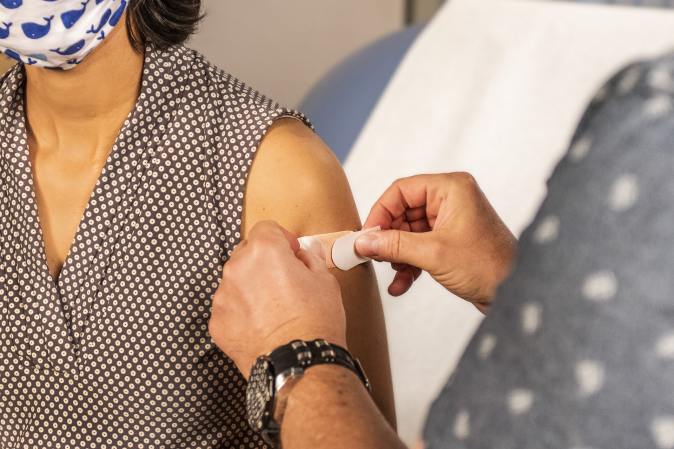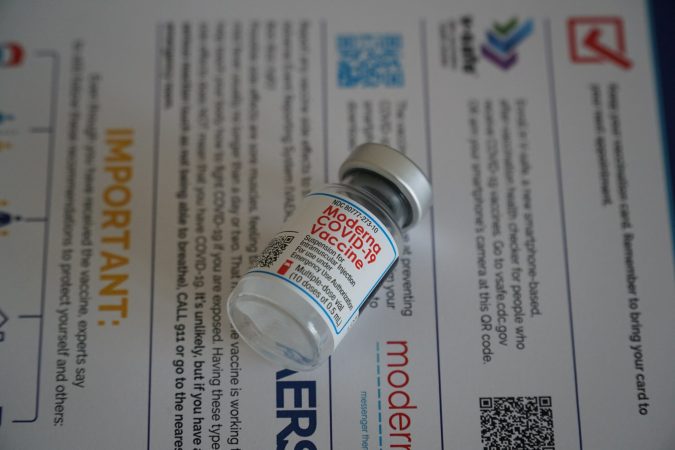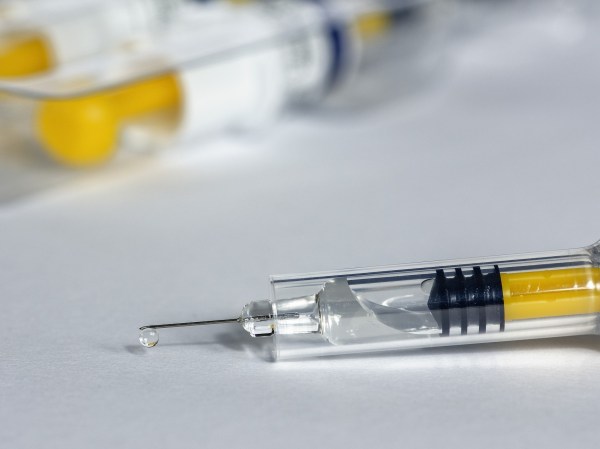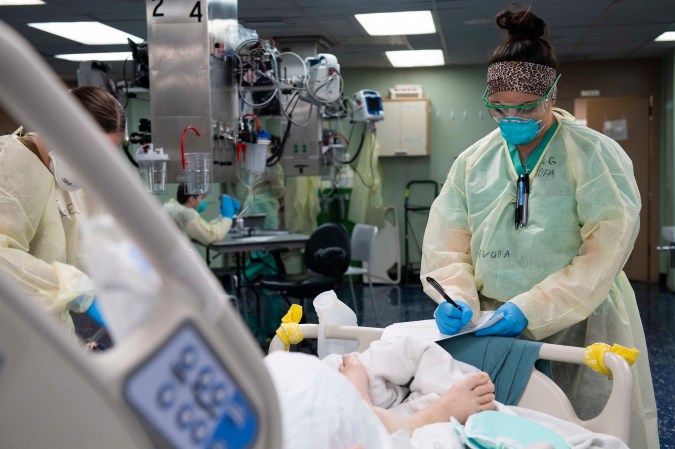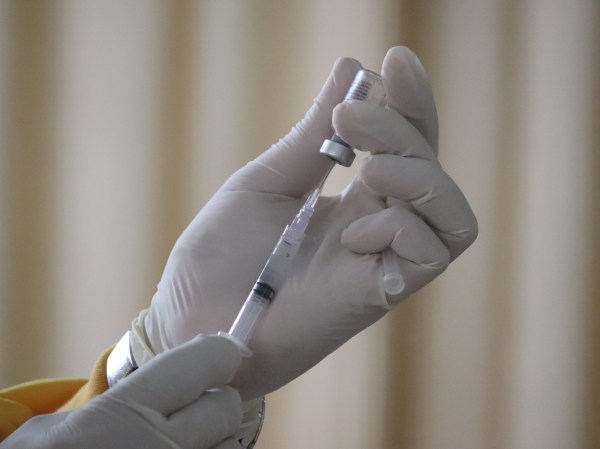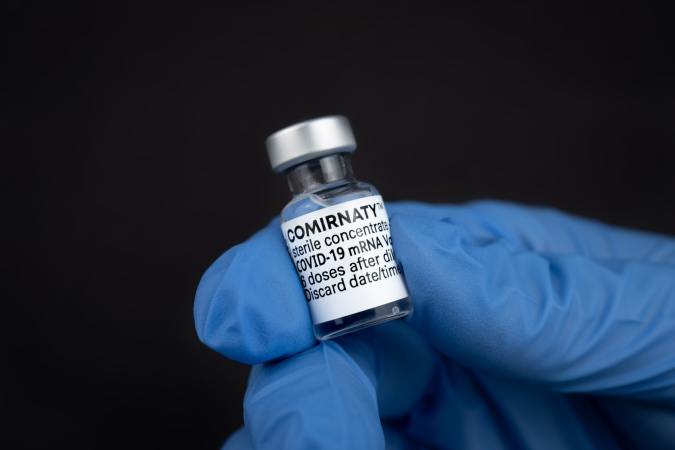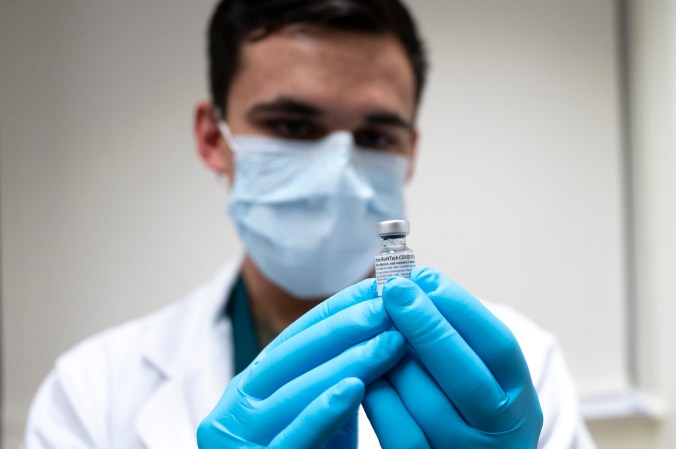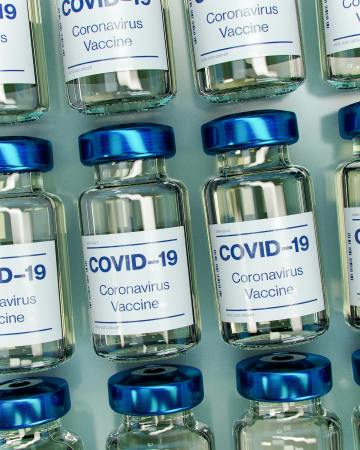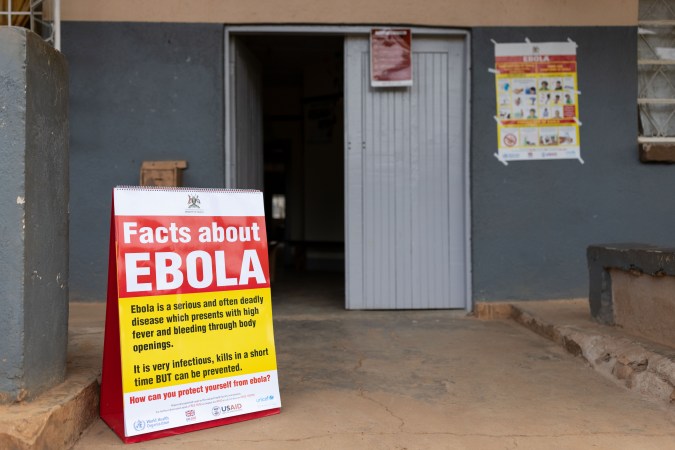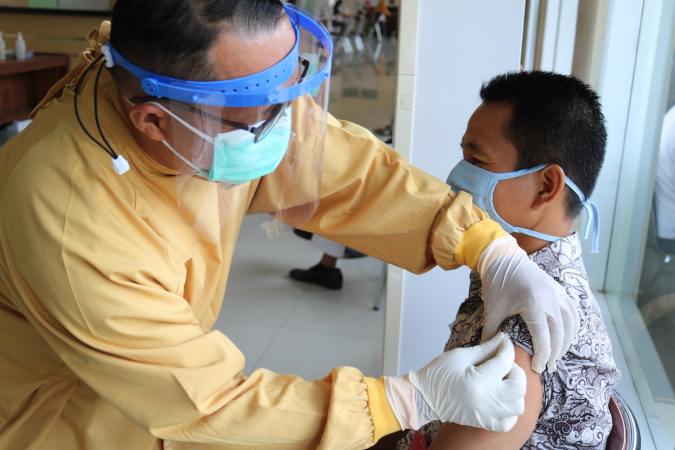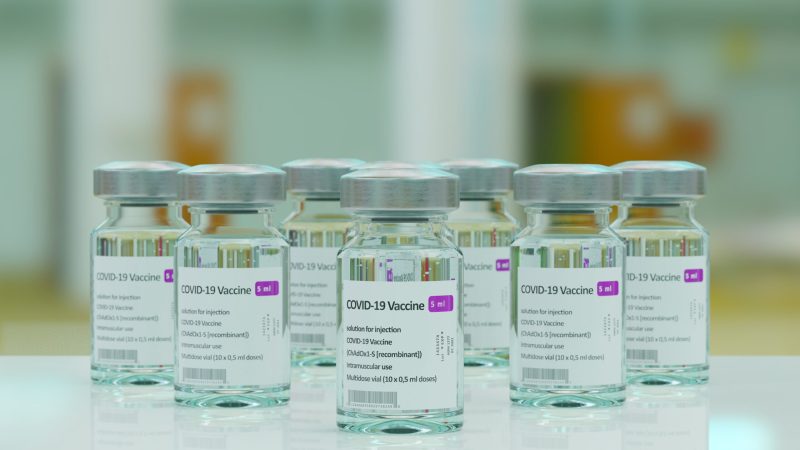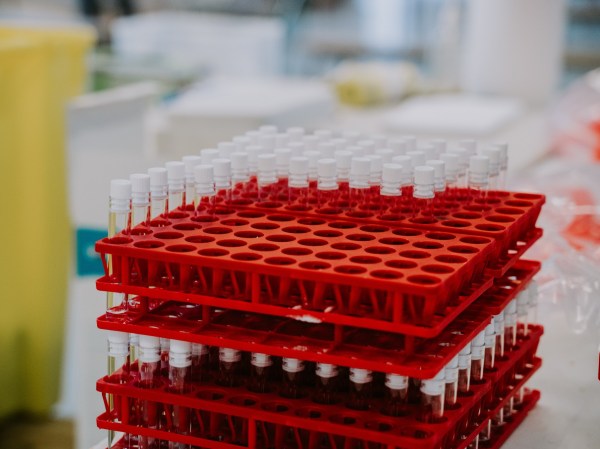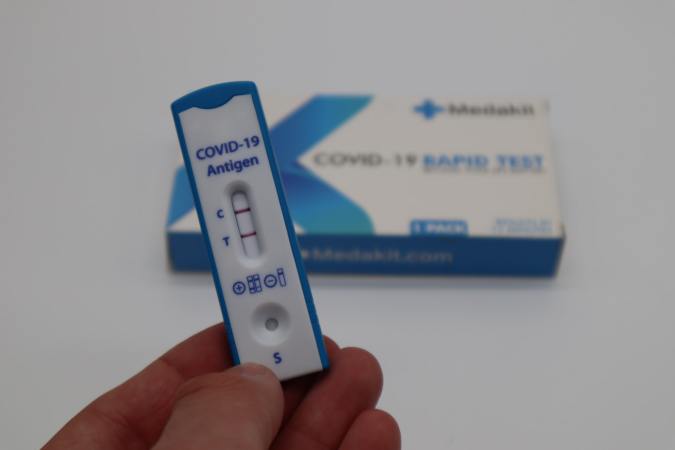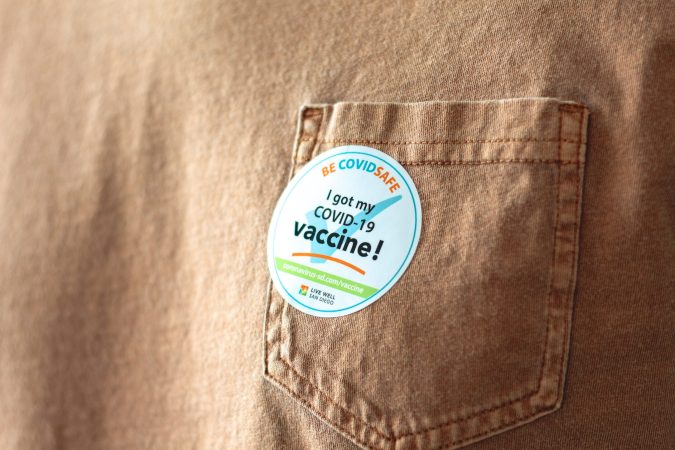

As an outbreak of Ebola virus disease continues in Uganda, there is some progress in preventing future outbreaks. The results of two randomized, placebo-controlled trials analyzing three Ebola vaccine administration strategies published Wednesday in the New England Journal of Medicine show promising results.
According to the National Institutes of Health (NIH), “antibodies were produced in response to the vaccine regimens beginning at 14 days after the first vaccination and continued to be detectable at varying levels—depending on the vaccine and regimen used—in both children and adults for one year.”
[Related: Uganda’s Ebola outbreak is ‘rapidly evolving,’ according to WHO.]
Enrollment for these trials began in 2017, and the volunteers for the study are from Guinea, Liberia, Sierra Leone, and Mali. One of the study’s main goals was to identify the best vaccination strategies to curtail future Ebola outbreaks. The trials were conducted simultaneously and shared a placebo arm. A total of 1,400 adults and 1,401 children (age 1 to 17 years-old) were randomized to receive two injections of either placebo or Ebola vaccine in one of three different regimens.
One vaccine regimen was a dose of the Johnson & Johnson vaccine followed by a booster dose of a vaccine supplied by Bavarian Nordic eight weeks later. A second regimen was two doses of a vaccine made by Merck, given eight weeks apart. The third regimen included one dose of the Merck vaccine followed by a placebo injection eight weeks later.
All of the regimens produced antibodies 14 days after the first of two shots and these antibodies were detectable at varying levels in both children and adults for one year, depending on the vaccine and regimen.
[Related: Ebola hasn’t been cured yet, but two experimental drugs are showing significant progress.]
“The researchers say this finding is notable because vaccines against Ebola virus disease are typically administered during an outbreak and so information about how rapidly a vaccine produces an antibody effect is of potential use in efforts to protect at-risk populations,” wrote the NIH in a statement.
However, these vaccines target the Zaire strain of the virus, not the Sudan strain of Ebola. The Sudan strain is behind Uganda’s current outbreak that began in September and has caused at least 55 deaths and 142 confirmed cases, according to the The World Health Organization (WHO). There are signs that the outbreak is easing, including a hospital discharging the last known patient with Ebola on December 2. Uganda additionally received doses of a vaccine that targets the Sudan strain for use in a clinical trial last week.
The agency stresses that the results aren’t able to assess protection from the disease because the level of antibody response that correlates with vaccine-induced protection against infection or disease is not currently known. “As no participants contracted Ebola virus disease during the trial, the investigators were not able to assess protection from disease,” the NIH writes.
According to the researchers in this study, some of the strength of the trials include outstanding retention of volunteers throughout the process, community engagement ,and trust-building efforts. “Long-term follow up of the participants in this trial is taking place to determine if and when booster doses might be needed,” Brian Greenwood, a study co-author from the London School of Hygiene & Tropical Medicine, told Reuters.
In 2019, European regulators approved and the WHO prequalified Merck’s Ebola vaccine Ervebo. Johnson & Johnson’s vaccine Zabdeno received clearance from European regulators in 2020 and clearance from the WHO in 2021. Mvabea, made by Bavarian Nordic and used in the used in the Johnson & Johnson regimen, also received approval in 2020 and prequalification in 2021.
